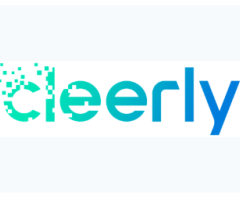
December 7, 2011 — At RSNA 2011, Siemens Healthcare is unveiling the Somatom Perspective. It is the first computed tomography (CT) scanner to offer the eMode software solution, which helps determine the best correlation between dose, efficiency and image quality; it can also adjust the required scan parameters automatically.
Potentially suited to cover a variety of clinical fields, the new scanner may allow clinics and practices to extend their range of available examinations. The system's operation can be optimized for the individual scan – for example, in terms of tube current or scan velocity – relieving wear and tear on the CT.
The eMode software (the “e” represents efficiency) can be selected from the user interface control panel. eMode may determine and automatically select the scan parameters so the CT operates with as low a load as possible; this minimizes wear and increases the scanner's life cycle.
With its slim gantry and footprint of 18 square meters, the machine can be placed even in smaller rooms. On average, it may use 71 kVA of electricity and may emit approximately 7 kW of heat. To help facilitate its use in daily routines and possibly minimize exam times, it is equipped with new Fully Assisting Scanner Technologies (FAST) features. These help simplify and automate time-consuming, complex procedures, thus potentially supporting clinical personnel at every stage of the CT examination.
The Interleaved Volume Reconstruction method may enable high-quality imaging, using information from 128 CT slices to facilitate detection of even extremely small diagnostic details. In combination with a 38 mm detector width, the system can scan long ranges rapidly, making it an option for thoracic examinations. A 50 cm area can be scanned with high image quality in 5.21 seconds, enabling the imaging of all body regions and addressing problems of neurology or oncology.
Siemens’ Iterative Temporal Resolution Improvement Method (iTRIM) employs an iterative image reconstruction algorithm to raise overall image quality in cardiac examinations and curbs noise. This results in a 195-millisecond temporal resolution. Motion artifacts are reduced, enabling accurate diagnosis even during a rapid heartbeat.
To the patient, the lowest possible radiation dose is as critical as high image quality. CARE (Combined Applications to Reduce Exposure) Dose 4-D adapts the X-ray tube current in real time for the entire scan region; this ensures consistently high image quality while keeping dose as low as possible for all organs and types of anatomy.
Another potential dose-saving technology is Sinogram Affirmed Iterative Reconstruction (SAFIRE), a method for iterative CT image reconstruction based on raw data. SAFIRE may achieve a dose savings of up to 60 percent for a wide range of applications. With a reconstruction speed of up to 15 images per second, the technology may be suited for daily clinical routines. An Illumination MoodLight with adjustable LED panel is integrated into the Somatom to brighten the sterile atmosphere of many exam rooms.
For more information: www.siemens.com/healthcare


 January 07, 2026
January 07, 2026 









